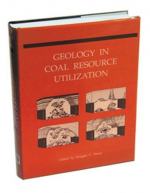|
This section contains 1,143 words (approx. 4 pages at 300 words per page) |

|
The purpose of resource utilization (also known as in situ resource utilization [ISRU]) is to reduce the mass, and thus the cost, of space missions. On Earth, explorers rarely took all the food and supplies they would need for their entire journey. Instead, they relied on the resources around them, hunting for or gathering food, chopping down trees for lumber, and so forth. By carrying with them only what they needed to get from one stop on their journey to another, they minimized the size of their expeditions and made them more adaptable to changes.
The same principle is applicable to exploration of the solar system. Carrying all the food, propellant, air, and other supplies needed for a human mission to the Moon or Mars would make a spacecraft very large and heavy. Given the high cost to launch payloads—up to $10,000 per pound—reducing the...
|
This section contains 1,143 words (approx. 4 pages at 300 words per page) |

|


